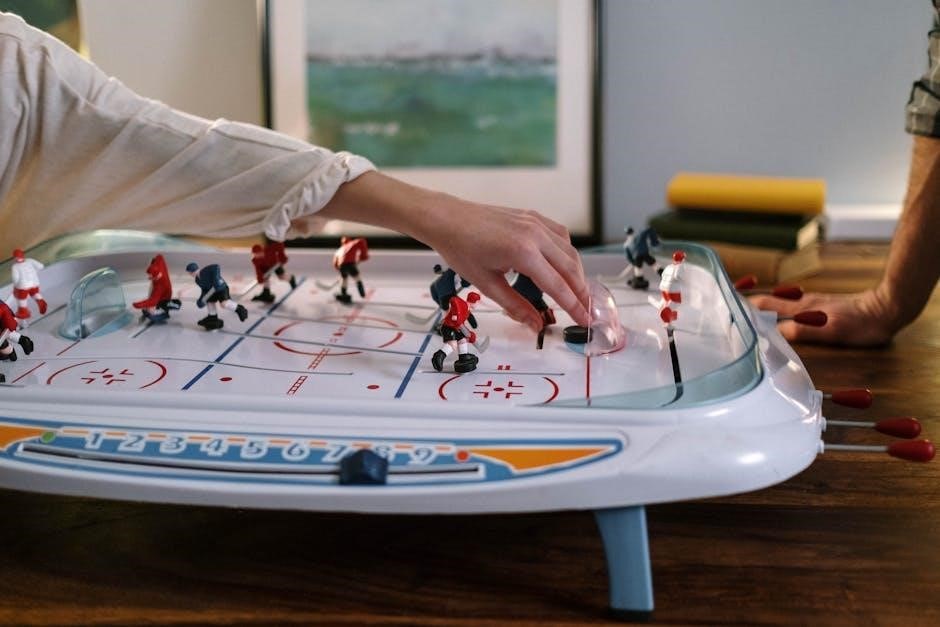Welcome to our hockey stick height guide! This guide helps players of all levels find the perfect stick height for optimal performance, comfort, and safety on the ice.
Why Stick Height Matters
Proper hockey stick height is crucial for performance, comfort, and safety. It directly impacts puck handling, shooting accuracy, and mobility on the ice. A stick that’s too long or too short can hinder control, lead to fatigue, and increase the risk of injury. Correct height ensures optimal posture, allowing players to maintain balance and generate power efficiently. This guide emphasizes the importance of finding the right fit to enhance your game and overall hockey experience.
Overview of the Guide
This comprehensive guide provides detailed insights into selecting the ideal hockey stick height. It covers essential measurements, factors influencing stick length, and position-specific recommendations. The guide includes size charts, tips for forwards, defensemen, and goalies, and advice on adjusting stick height for optimal performance. Whether you’re a youth player or a seasoned athlete, this resource offers practical information to help you choose the right stick, ensuring comfort, control, and peak performance on the ice.
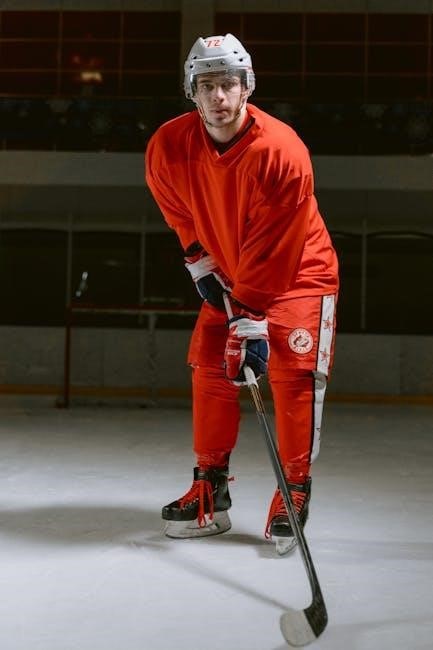
Importance of Proper Hockey Stick Height
Proper hockey stick height enhances performance, comfort, and control, while preventing injuries. It ensures optimal puck handling, shooting accuracy, and mobility, making it essential for all players.
Impact on Performance
Proper hockey stick height significantly impacts performance by enhancing puck handling, shooting accuracy, and mobility. A well-sized stick allows for better control and maneuverability, crucial during fast-paced games. Incorrect stick height can hinder performance, making it harder to handle the puck or shoot effectively. Players with optimal stick height experience improved precision and power, enabling them to perform at their best. Ensuring the right fit is essential for maximizing skills and enjoying the game.
Comfort and Control
Proper hockey stick height ensures comfort and control, allowing players to handle the puck and maneuver effortlessly. A stick that’s too short or too long can cause discomfort and fatigue, affecting performance. Correct height enables optimal skating posture, reducing strain and enhancing precision. Players with the right fit experience better control during passes, shots, and stickhandling, making the game more enjoyable and effective. Balancing comfort and control is key to peak performance on the ice.
Preventing Injuries
Proper hockey stick height is crucial for preventing injuries, as it ensures correct posture and reduces strain on the body. A stick that’s too short or too long can lead to discomfort, fatigue, and increased risk of injury during gameplay. Correct height reduces strain on the shoulders, back, and knees, minimizing the risk of long-term damage and keeping players safe and effective on the ice.
How to Measure Hockey Stick Height
Stand upright with skates on, hold the stick vertically, and ensure the blade reaches just below your chin for proper fit and alignment with skating posture.
Standing Upright Measurement
Start by standing upright while wearing your skates, as this provides the most accurate measurement. Hold the stick vertically in front of you, with the blade facing downward. The stick should reach just below your chin when measured from the floor. Ensure your shoulders are relaxed and knees slightly bent, mimicking your on-ice stance. This method ensures the stick length aligns with your skating position and personal comfort, optimizing performance and control on the ice.
Holding the Stick Correctly
Holding the stick correctly is essential for control and performance. Grip the top of the shaft with your top hand, keeping it relaxed, while your bottom hand controls the stick’s angle. Stand naturally with your knees slightly bent and shoulders relaxed. The stick should extend just below your chin when held upright. This posture ensures proper balance, allowing for precise puck handling and shooting. Adjust your grip and stance as needed for comfort and effectiveness during gameplay.
On-Ice Adjustment
On-ice adjustment is crucial for finalizing your hockey stick height. While initial measurements provide a baseline, actual gameplay reveals whether the stick feels right. Pay attention to comfort and performance during skating, shooting, and passing. If the stick feels too long or short, consider cutting it or using extensions. Testing the stick during drills can help you assess its feel and make necessary tweaks for optimal performance.
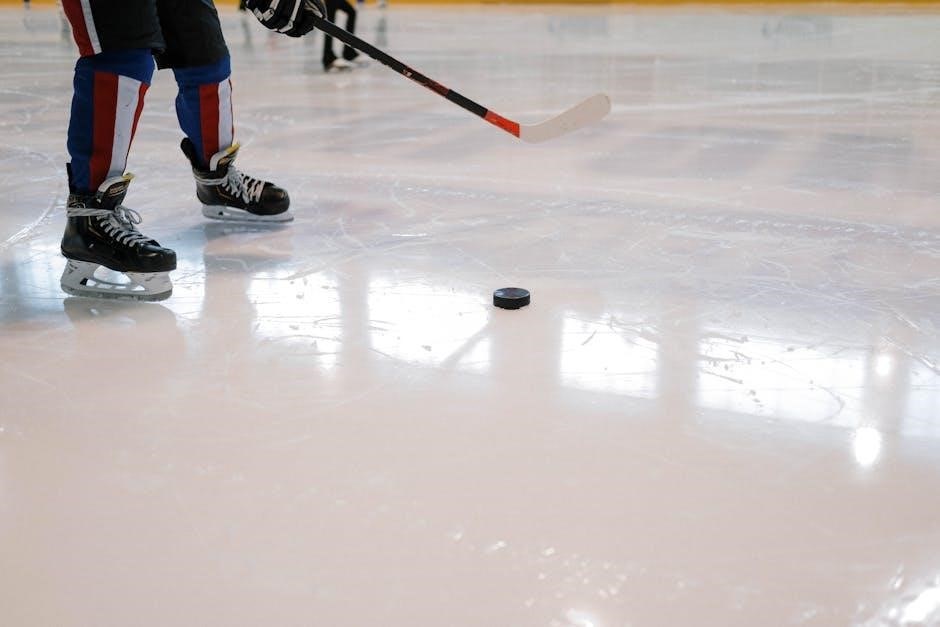
Factors Influencing Stick Height
Player height, weight, position, skill level, skating stance, and personal preference all influence stick height. These factors help determine the ideal length for comfort and performance.
Player Height and Weight
Player height and weight are key factors in determining stick height. Taller players typically require longer sticks, while shorter players need shorter sticks for proper control. Weight influences stick flex rather than length, but overall, proper alignment with body height ensures optimal handling and comfort. A stick reaching just below the chin when standing in skates is ideal, balancing reach and maneuverability for all players.
Playing Position
Playing position significantly influences stick height. Forwards often prefer shorter sticks for agility and puck control, while defensemen opt for longer sticks to enhance reach and blocking ability. Goalies require specialized sticks with a focus on paddle length for better puck handling. The stick height should align with the demands of each position, ensuring optimal performance without compromising comfort or control. Proper stick length for each role is essential for executing responsibilities effectively on the ice.
Skill Level and Style
Skill level and playing style significantly impact stick height preferences. Advanced players often adjust stick length for specific techniques, such as slapshots or stickhandling. Players prioritizing agility may choose shorter sticks for quicker control, while those focusing on power might prefer slightly longer sticks for added leverage. Style influences stick height, as speed-focused players opt for shorter sticks, and power-oriented players prefer longer ones. Balancing skill level and style ensures optimal performance and comfort on the ice.
Skating Stance
Skating stance plays a crucial role in determining the ideal stick height. Players who bend more at the knees may prefer a slightly shorter stick for better control and agility. Conversely, those with a more upright stance might opt for a longer stick to maintain reach and leverage. The stick should complement the player’s natural skating position, ensuring optimal performance and comfort. Proper alignment with skating stance enhances puck handling, shooting, and overall mobility on the ice.
Personal Preference
Personal preference significantly influences hockey stick height, as comfort and feel are subjective. Some players adjust their stick height slightly shorter or longer than recommended for better control or reach. Experimentation is key, as individual comfort can vary widely. While guidelines provide a starting point, personalizing stick height ensures optimal performance and confidence. Players should consider how the stick feels during gameplay, making adjustments to suit their unique style and preferences for the best on-ice experience.
Hockey Stick Size Chart
A hockey stick size chart correlates player height with recommended stick length, ensuring optimal performance and comfort. It provides a clear, age-specific guide for selecting the right stick.
Age Groups and Corresponding Stick Lengths
The hockey stick size chart categorizes players by age, providing recommended stick lengths for optimal performance. Youth players (5-8 years) typically use sticks between 44-50 inches, while junior players (14-17 years) prefer 50-54 inches. Intermediate players (16-19 years) often choose 54-58 inches, and senior players (18+) use 58-60 inches. These guidelines help players select a stick that aligns with their age group, ensuring proper fit and comfort for enhanced gameplay.
Height to Stick Length Conversion
A player’s height directly influences their ideal hockey stick length. A general rule is that the stick should reach just below the chin when standing upright in skates. For example, a player standing 56″ tall typically uses a stick between 54-56″. Taller players (60″ and above) often prefer sticks around 58-60″, while shorter players (under 46″) may opt for 46-48″ sticks. This conversion ensures proper posture, control, and performance on the ice.
How to Choose the Right Stick Height
Proper stick height is key for performance, control, and safety. Measure from the ice to just below your chin while wearing skates, then adjust based on position, skill level, and comfort.
Using the Size Chart
A hockey stick size chart is a valuable tool for determining the ideal stick length based on a player’s height. These charts typically correlate a player’s height with the recommended stick length, ensuring optimal performance and comfort. For example, a player standing 56″ may require a stick between 54-56 inches, while a taller player at 60″ might need a 58-60 inch stick. The charts often account for skating posture, as stick length should allow the blade to reach just below the chin when standing in skates. Some charts also consider playing position, with forwards and defensemen having slightly different needs. To use a size chart effectively, measure your height with skates on and refer to the corresponding stick length. Keep in mind that personal preference and skating style can influence the final choice, so it’s a good idea to test the stick on the ice before making a decision. A properly sized stick ensures better puck control, shooting accuracy, and overall performance.
Considering Flex and Kick Point
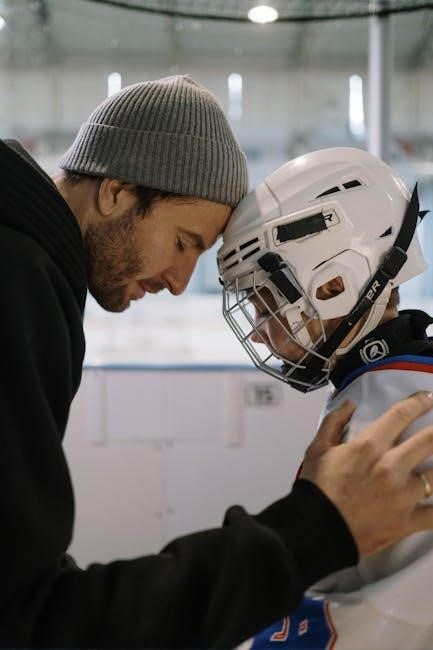
Flex and kick point are critical factors in choosing a hockey stick, impacting performance and feel. Flex refers to the stick’s stiffness, with higher flex ratings offering more power for stronger players. The kick point determines where the stick flexes most, affecting shot release and control. Mid kick points provide balanced performance, while low kick points suit quick releases and high kick points enhance power. Proper flex and kick point alignment with your strength, position, and style optimize shooting accuracy and control, complementing the ideal stick height for peak performance.
Blade Features and Grip
Blade features and grip play a significant role in a hockey stick’s performance. The blade’s shape, size, and lie affect puck control and shooting accuracy. A more rounded blade offers better puck feel, while a flatter blade enhances shooting. Grips vary from tacky to smooth, impacting stickhandling. Tacky grips provide better control, while smooth grips allow for quicker releases. Balancing blade features and grip with stick height ensures optimal performance, comfort, and precision on the ice, tailored to individual playing styles and preferences.
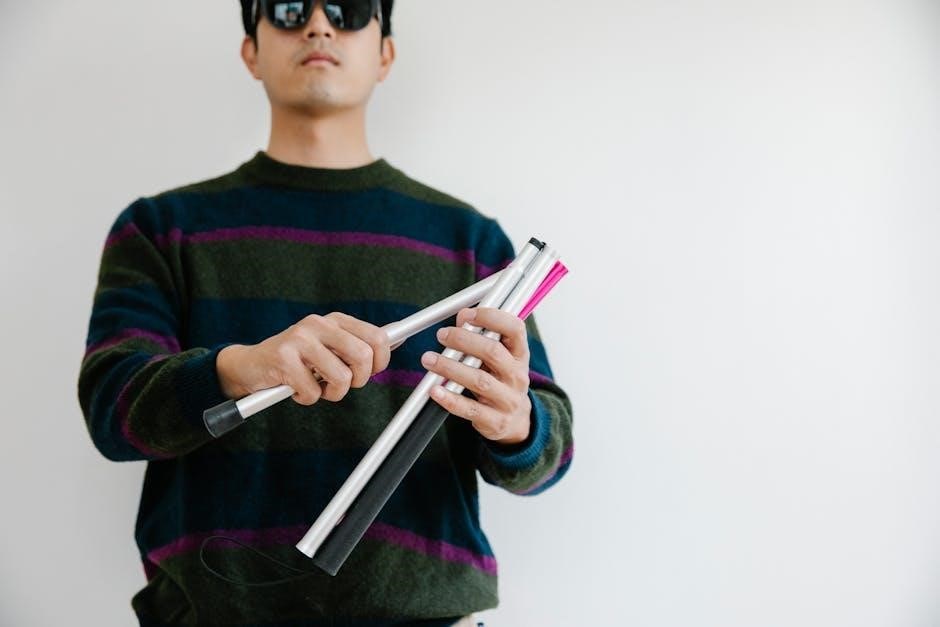
Position-Specific Stick Height
Forwards, defensemen, and goalies require different stick heights for optimal performance. Forwards prefer shorter sticks for agility, defensemen opt for longer sticks, and goalies use specialized equipment.
Forwards
Forwards typically prefer a slightly shorter stick for better agility and puck control. The stick should reach just below the chin when standing in skates, allowing quick stickhandling and precise shooting. This height enables forwards to maintain control in tight spaces and maneuver effectively during fast-paced gameplay. Proper stick height is crucial for forwards to maximize their offensive skills and react swiftly to scoring opportunities.
Defensemen
Defensemen often prefer a slightly longer stick to enhance reach and control, particularly for blocking shots and passing. The stick should reach just below the chin when standing upright in skates, providing added length for defensive maneuvers. This height allows defensemen to cover more ice and maintain puck control while still enabling effective stickhandling. Proper stick height is essential for defensemen to balance reach and control, ensuring they can perform their defensive responsibilities effectively.
Goalies
Goalies require a unique stick design, typically shorter and wider, to handle the puck effectively and protect the net. The stick length for goalies is generally shorter than for other positions, ranging from 26 to 28 inches for youth and 28 to 30 inches for senior players. This shorter length allows for better maneuverability and precise control when handling the puck. The wider blade and paddle also provide a larger surface area for blocking shots and making passes, making it essential for goalies to choose a stick that balances protection and control.
Adjusting Stick Height
Adjusting stick height involves cutting the shaft or using extensions to achieve the perfect fit. This ensures optimal performance, comfort, and control for players of all levels.
Cutting the Stick
Cutting the stick is a common adjustment to achieve the perfect height. Start by measuring the desired length, then use a saw to carefully cut the shaft. Ensure the cut is clean and smooth to avoid splinters. Wearing gloves and safety goggles is recommended for protection. After cutting, sand the edge for a smooth finish. Remember, cutting is irreversible, so double-check measurements before making the cut. This adjustment ensures the stick fits comfortably, enhancing performance and control on the ice.
Using Stick Extensions
Using stick extensions is a practical way to adjust your hockey stick’s height without cutting it. These extensions can be added to the top of the shaft, allowing for customization. They are ideal for players who need a taller stick due to growth or position changes. Extensions offer a cost-effective solution and can be easily removed or replaced. However, ensure the extension fits securely to maintain balance and performance. Proper installation is key to avoiding issues during gameplay.
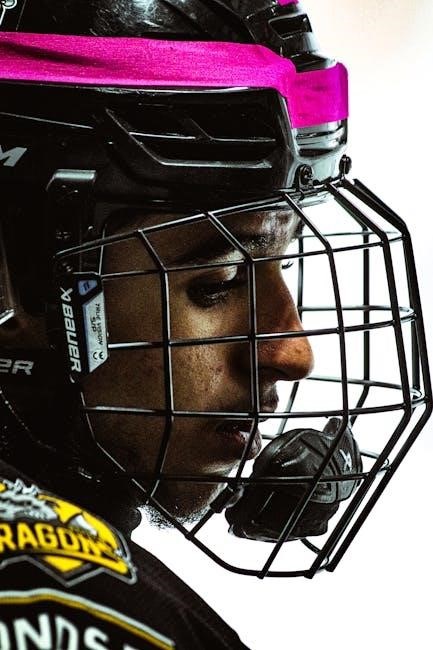
Advanced Techniques for Stick Height
Advanced techniques involve customizing stick height to enhance specific skills, such as slapshots or stickhandling, ensuring optimal performance tailored to individual playing styles and preferences.
Flex Considerations
Flex, or the stick’s stiffness, plays a crucial role in performance alongside height. A lower flex rating suits younger or smaller players, offering easier energy storage for shots. Higher flex ratings, like 85 or 100, are ideal for stronger players, providing more power. Proper flex ensures optimal energy transfer during shots and passes. When combined with the right stick height, it enhances accuracy and control. Balancing flex with stick height is key for maximizing performance and comfort on the ice.
Customizing for Performance
Customizing your hockey stick height enhances performance by tailoring it to your unique needs. Adjustments can improve puck control, shooting accuracy, and skating efficiency. Forwards may prefer a shorter stick for agility, while defensemen opt for longer sticks to block shots. Personalizing the height ensures optimal energy transfer during shots and passes. Combining the right height with proper flex and blade features maximizes performance, allowing players to execute skills effectively and comfortably on the ice.
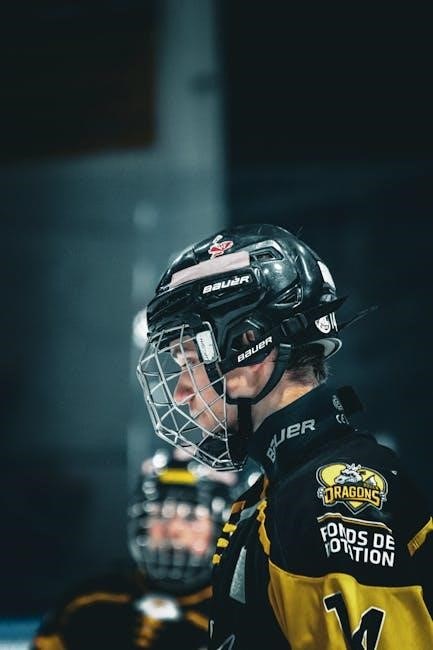
Maintenance Tips
Regularly inspect your stick for damage, clean it after use, and store it in a dry place. Proper care extends its life and performance.
Regular Checks
Regularly inspect your hockey stick for cracks, dents, or wear, especially after games or practices. Check the blade for damage and the shaft for flexibility. Clean the stick with a damp cloth to remove dirt and tape residue. Store it in a dry place, away from direct sunlight, to prevent warping. These simple checks help maintain performance, prevent breakage, and extend the stick’s lifespan. Consistent care ensures your stick remains reliable and ready for gameplay.
Storage and Care
Store your hockey stick in a dry, cool place to prevent warping or damage. Avoid direct sunlight and extreme temperatures, as they can weaken the materials. Clean the stick with a damp cloth, removing dirt and tape residue. Never use harsh chemicals or abrasive cleaners; For optimal storage, keep the stick upright or lay it flat on a stable surface. Proper care extends the stick’s lifespan and maintains its performance. Regular maintenance ensures your stick remains in great condition for every game.
Choosing the right hockey stick height is essential for performance, comfort, and safety. Use this guide to find your ideal size and elevate your game on the ice.
Final Thoughts

Proper hockey stick height is crucial for performance, comfort, and safety. It enhances puck handling, shooting accuracy, and skating posture. While charts provide a starting point, personal preference and on-ice testing are key. Experiment with different lengths to find your ideal fit, ensuring optimal control and confidence. Remember, the right stick height can elevate your game and overall hockey experience.
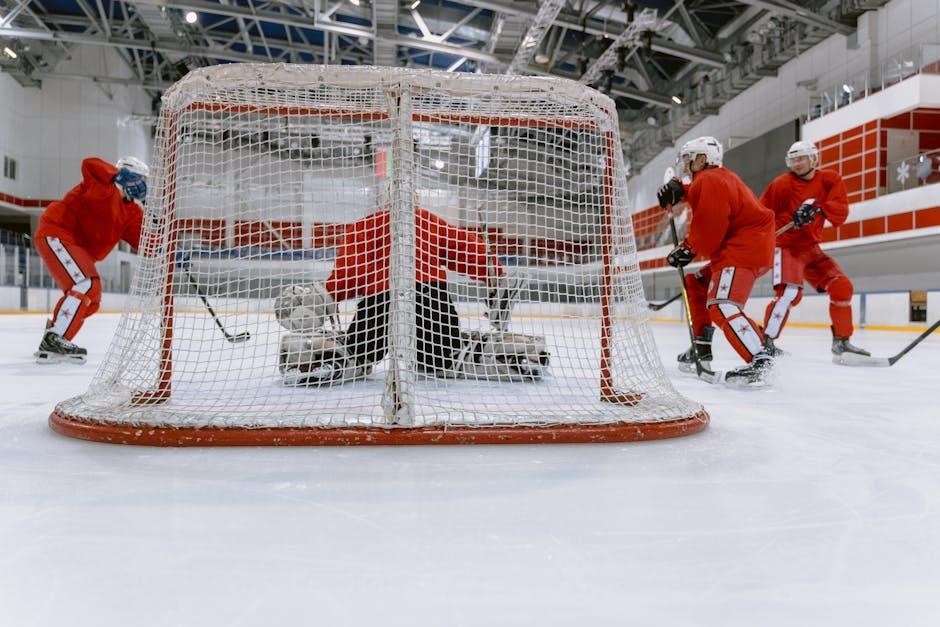
Encouragement to Experiment
Don’t be afraid to try different stick heights to find your perfect fit. While charts provide a starting point, on-ice testing is crucial. Adjust your stick length during practice to see what feels most comfortable and effective. Small tweaks can make a big difference in performance and confidence. Experimentation is key to optimizing your game, so take the time to explore and refine your stick height for the best results.
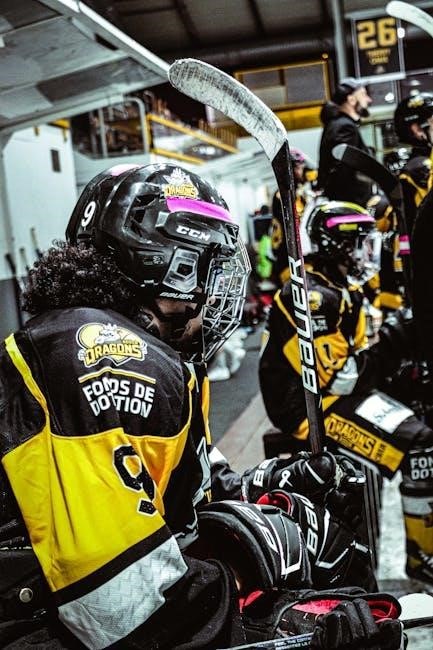
Additional Resources
Explore our recommended reading and useful links for further insights on hockey stick height, care, and customization to enhance your game.
Recommended Reading
Check out expert guides and articles on hockey stick height, including tips on measurement, customization, and maintenance. Discover advanced techniques for optimizing performance and explore position-specific advice. Learn from experienced players and coaches to refine your stick selection process. These resources offer in-depth insights and practical advice to help you make informed decisions about your equipment. Whether you’re a beginner or a seasoned pro, these readings will enhance your understanding of stick height and its impact on your game.
Useful Links
Explore these resources for detailed guides on hockey stick height, including expert articles, size charts, and video tutorials. Visit NHL for professional insights, HockeyMonkey for equipment guides, and Pure Hockey for comprehensive stick sizing charts. These links provide practical advice for players of all levels, helping you find the perfect stick fit and enhance your game with expert recommendations and tips.
